Senegal: Lac de Guiers and Tocc Tocc Reserve
After the manatee captures I went to northwestern Senegal, to Lac de Guiers. This huge lake is situated south of the Senegal River in an agricultural area near the town of Richard-Toll and it provides water for many cities in the country, including Dakar. It connects to the Senegal River by a manmade channel.
Several years ago Senegalese turtle biologist Tomas Diagne was surveying a cove on the northwestern side of the lake when he sighted manatees there. He was fascinated by them and this led him to start working to establish the area as a refuge. Manatees, turtles and many species of water birds will benefit from the protected area. At this point the paperwork to make it an official site has mostly made its way through government channels so it will be created soon. As far as I know, this will be the only protected area in all of West Africa created specifically for manatees. In the short term Tomas is hoping to get grants to do manatee surveys and to buy a small fiberglass boat to be used to conduct them. His long-term goal is to build an education center there which would be run by the local people. He envisions having kayaks and pirogues that people could rent to paddle out onto the lake and to bring school children out to learn about the ecosystem. Local fishermen would earn extra money by guiding trips. He has worked with the residents of the nearby fishing village of Toleu to understand their relationship to the lake and its animal inhabitants, so that the refuge will be a positive thing for them.
Our first day in the area, two enthusiastic guys from Toleu paddled us out to the proposed refuge. It is off the main lake and can be entered either by a small narrow channel or a wider one. I was immediately amazed by the number and size of the water lilies carpeting the surface of the water, absolutely spectacular. The appropriately named Lily-trotter (or African Jacana) birds were everywhere as well as many other species: Little Bee-eaters buzzed above us, cormorants dove for fish and African Pygmy Geese flew by. A pair of African Fish Eagles have a nest there and called loudly as we passed. Big schools of tiny fish swam by, some minnows, others juveniles of larger species like Tilapia, an important food fish for people here.
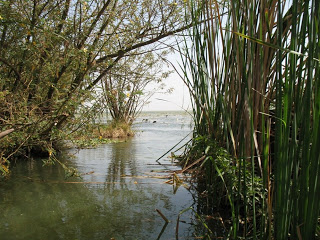 It seemed like there were a million water lilies!
It seemed like there were a million water lilies!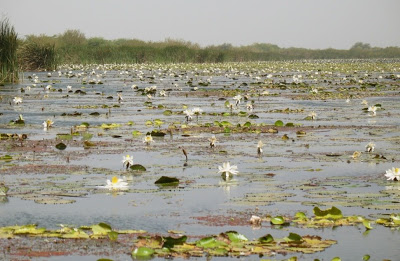
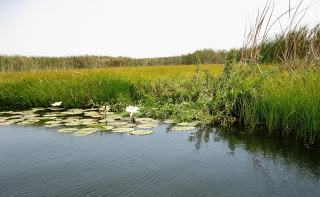 African Jacana, Actophilornis africana
African Jacana, Actophilornis africana Another striking water bird, the Spur-winged Lapwing (and an unidentified friend!)
Another striking water bird, the Spur-winged Lapwing (and an unidentified friend!)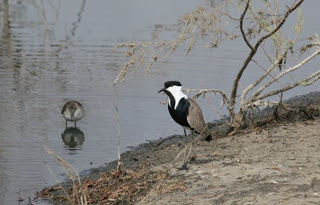 Juvenile African Fish Eagle
Juvenile African Fish Eagle I saw at least 3 species of water lily that are known manatee food plants (Nymphea lotus, Nymphea maculata and Nymphoides indica) as well as several species of grasses and some new plants I still need to identify. We found one area with fresh manatee feeding sign but the villagers say they mostly see manatees during the rainy season from July-September. I realized at that point that in the places I’d been along the Senegal River everyone told me they saw manatees during the rainy season, but no one seemed to know where they went during the dry season. So I continue to be hopeful that the tagged manatees are going to teach us.
I saw at least 3 species of water lily that are known manatee food plants (Nymphea lotus, Nymphea maculata and Nymphoides indica) as well as several species of grasses and some new plants I still need to identify. We found one area with fresh manatee feeding sign but the villagers say they mostly see manatees during the rainy season from July-September. I realized at that point that in the places I’d been along the Senegal River everyone told me they saw manatees during the rainy season, but no one seemed to know where they went during the dry season. So I continue to be hopeful that the tagged manatees are going to teach us.
Another thing I noticed (unfortunately) were many old nets left in the water. Most had algae or plants growing in them, big holes and some had caught fish. Tomas told me he plans to have a clean-up day as soon as the refuge is created to remove all the old, abandoned nets left behind.
 We spent several days in the village and the people there were incredibly welcoming. Each morning I took long walks along the lake edge, enjoying the scenery and the wildlife. We also handed out “Sauvons les Lamantins” (Save the Manatees in French) stickers created for me by Save the Manatee Club in Florida, to help raise awareness about protecting the species in Africa. The day after we gave them out, I noticed them stuck on front doors and window shutters all around the village.
We spent several days in the village and the people there were incredibly welcoming. Each morning I took long walks along the lake edge, enjoying the scenery and the wildlife. We also handed out “Sauvons les Lamantins” (Save the Manatees in French) stickers created for me by Save the Manatee Club in Florida, to help raise awareness about protecting the species in Africa. The day after we gave them out, I noticed them stuck on front doors and window shutters all around the village.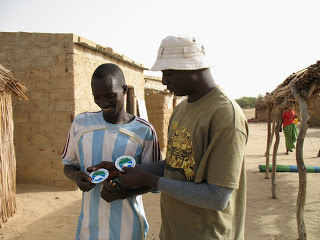 Some other images to give you a sense of the place: a view of the village through the front window of the house I stayed at.
Some other images to give you a sense of the place: a view of the village through the front window of the house I stayed at.
 A sailboat on Lac de Guiers
A sailboat on Lac de Guiers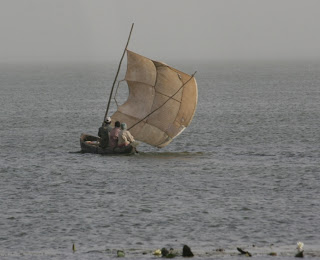 Despite the nearby lake, the land around it is very arid- composed of both salt marsh and savannah.
Despite the nearby lake, the land around it is very arid- composed of both salt marsh and savannah.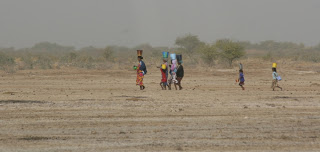 On our way to and from Lac de Guiers, we passed through the beautiful old colonial town of St. Louis near the mouth of the Senegal River. Just south of town we passed the exact place where Michel Adanson collected the first West African manatee specimen by a European during his travels through Senegal from 1748-1753, and this holotype was later sent to Europe. Unfortunately he didn’t get credit for describing the species, that honor eventually fell to Link in 1795. But don’t feel too sorry for Adanson, there are numerous other species named for him, including the Baobab tree, of which all 6 species worldwide have the genus name Adansonia. The African baobab is Adansonia digitata.
On our way to and from Lac de Guiers, we passed through the beautiful old colonial town of St. Louis near the mouth of the Senegal River. Just south of town we passed the exact place where Michel Adanson collected the first West African manatee specimen by a European during his travels through Senegal from 1748-1753, and this holotype was later sent to Europe. Unfortunately he didn’t get credit for describing the species, that honor eventually fell to Link in 1795. But don’t feel too sorry for Adanson, there are numerous other species named for him, including the Baobab tree, of which all 6 species worldwide have the genus name Adansonia. The African baobab is Adansonia digitata. 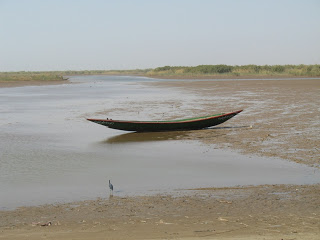

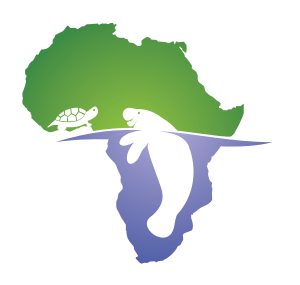
This looks & sounds incredible! I can't wait to hear more – and hopefully even one day get to visit. 🙂 Great photos, as always.